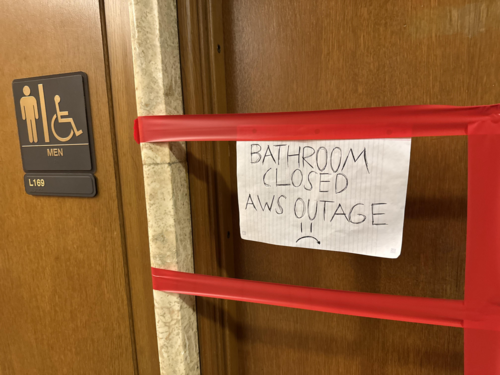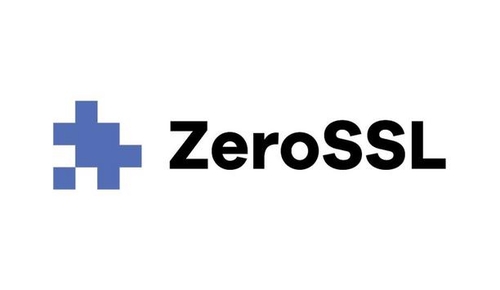🔗 View in your browser | ✍️ Publish on FAUN.dev | 🦄 Become a sponsor
Kala
#ArtificialIntelligence #MachineLearning #MLOps
🔍 Inside this Issue
Agentic AI is going pro—and getting dangerous: parallel coding swarms, conversational DevOps, and a ‘Wikipedia by LLM’ test the edges of trust, safety, and control. Meanwhile the stack is industrializing—GitHub’s surge, LangChain’s big bet, CUDA everywhere—so here’s what to adopt, sandbox, or side‑eye—let’s dig in.
🛡️ Agentic AI and Security
📈 AI Takes Over GitHub: TypeScript Tops the Charts as 36 Million New Developers Join the Platform
🧩 Build AI Agents Worth Keeping: The Canvas Framework
🖼️ Detect inappropriate images in S3 with AWS Rekognition + Terraform
🧠 Grokipedia
💸 LangChain Secures $125M and Launches LangChain & LangGraph 1.0
🤖 My n8n Journey: From Zero to Building AI-Powered Tools
⚡ New trend: Programming by kicking off parallel AI agents
📦 Red Hat Joins Forces with NVIDIA to Bring CUDA Everywhere
🛠️ Working with OneDev via MCP
Build boldly, sandbox ruthlessly.
Have a great week!
FAUN.dev() Team
🛡️ Agentic AI and Security
📈 AI Takes Over GitHub: TypeScript Tops the Charts as 36 Million New Developers Join the Platform
🧩 Build AI Agents Worth Keeping: The Canvas Framework
🖼️ Detect inappropriate images in S3 with AWS Rekognition + Terraform
🧠 Grokipedia
💸 LangChain Secures $125M and Launches LangChain & LangGraph 1.0
🤖 My n8n Journey: From Zero to Building AI-Powered Tools
⚡ New trend: Programming by kicking off parallel AI agents
📦 Red Hat Joins Forces with NVIDIA to Bring CUDA Everywhere
🛠️ Working with OneDev via MCP
Build boldly, sandbox ruthlessly.
Have a great week!
FAUN.dev() Team
⭐ Patrons
zerossl.com
Easily secure any site by putting SSL management on autopilot, supporting one-step validation and renewal via REST API.
ℹ️ News, Updates & Announcements
faun.dev
NVIDIA's teaming up with Red Hat, Canonical, SUSE, CIQ, and Flox to get the CUDA Toolkit into third-party and native package managers. No more grabbing it off NVIDIA’s own repos - now it ships right to where devs already are.
Red Hat’s going all in. CUDA will come baked into RHEL, OpenShift, and Red Hat AI. That means faster AI app rollouts and tighter hooks into the broader ecosystem.
Red Hat’s going all in. CUDA will come baked into RHEL, OpenShift, and Red Hat AI. That means faster AI app rollouts and tighter hooks into the broader ecosystem.
faun.dev
GitHub blew past 180M users in 2025, thanks in no small part to Copilot Free. It lit a fire under new devs - 80% used it in their first week.
TypeScript edged out Python and JavaScript to top the charts. AI repos? Over 4.3 million and climbing, double what they were two years ago.
TypeScript edged out Python and JavaScript to top the charts. AI repos? Over 4.3 million and climbing, double what they were two years ago.
faun.dev
LangChain just bagged $125M at a $1.25B valuation - and it’s not just building tools, it's aiming to standardize agent engineering with LLMs.
With the launch of LangChain and LangGraph 1.0, the platform drops a full stack for building and scaling AI agents in the real world:
- Insights Agent for debugging workflows
- A no-code agent builder for rapid prototyping
- Middleware for plugging in custom logic
- Prebuilt agent architectures for sane defaults
- LangSmith for observability and deployment
- And stateful, long-running agents powered by LangGraph
What it means: Agent dev is maturing. This is infrastructure now. Expect more batteries-included stacks for spinning up persistent, production-ready AI workflows.
With the launch of LangChain and LangGraph 1.0, the platform drops a full stack for building and scaling AI agents in the real world:
- Insights Agent for debugging workflows
- A no-code agent builder for rapid prototyping
- Middleware for plugging in custom logic
- Prebuilt agent architectures for sane defaults
- LangSmith for observability and deployment
- And stateful, long-running agents powered by LangGraph
What it means: Agent dev is maturing. This is infrastructure now. Expect more batteries-included stacks for spinning up persistent, production-ready AI workflows.
🐾 From FAUNers
faun.pub
OneDev 13.0+ bakes in an MCP server, letting Cursor IDE's AI agent handle CI/CD and issue flows - through plain English. Kick off builds, fix busted runs, triage issues, or review code, all by talking to your tools. Prompt templates keep things structured; real-time actions keep it snappy.
Natural language is creeping into version control. Workflows are getting conversational. DevOps is starting to sound... human.
Natural language is creeping into version control. Workflows are getting conversational. DevOps is starting to sound... human.
faun.pub
A dev built Quik8n, a Chrome extension that turns AI prompts into near-complete n8n workflows - about 80% done out of the box. It speaks natural language, skips the drag-and-drop, and cuts ramp-up pain for beginners. For pros, it's a prototyping head start.
Adoption cue: LLMs are moving in fast on no-code. Writing automation in plain English is becoming more and more viable + it’s getting addictive.
Adoption cue: LLMs are moving in fast on no-code. Writing automation in plain English is becoming more and more viable + it’s getting addictive.
⭐ Sponsors
cloudns.net
Cloud DNS is the most cost-effective way to manage your domain names. You can use it with Free DNS or Premium DNS, depending on your needs. Our Cloud DNS service provides up to 10,000% uptime Service Level Agreement (SLA).
ClouDNS offers Free DNS zone migration for all new customers!
ClouDNS offers Free DNS zone migration for all new customers!
🔗 Stories, Tutorials & Articles
martinfowler.com
Agentic LLM apps come with a glaring security flaw: they can't tell the difference between data and code. That blind spot opens the door to prompt injection and similar attacks.
The fix? Treat them like they're radioactive. Run sensitive tasks in containers. Break up agent workflows so they never juggle all three parts of the “Lethal Trifecta”: sensitive data, untrusted input, and outbound access. And for now, keep humans in the loop - every loop.
The fix? Treat them like they're radioactive. Run sensitive tasks in containers. Break up agent workflows so they never juggle all three parts of the “Lethal Trifecta”: sensitive data, untrusted input, and outbound access. And for now, keep humans in the loop - every loop.
civo.com
Modern AI eats GPUs for breakfast - training, inference, all of it. Matrix ops? Parallel everything. Models like LLaMA don’t blink without a gang of H100s working overtime.
Teams now design training and inference pipelines around horizontal + vertical GPU muscle by default.
Teams now design training and inference pipelines around horizontal + vertical GPU muscle by default.
blog.pragmaticengineer.com
Senior engineers are starting to spin up parallel AI coding agents - think Claude Code, Cursor, and the like - to run tasks side by side. One agent sketches boilerplate. Another tackles tests. A third refactors old junk. All at once.
Is it "multitasking on steroids"? Not just this as it messes with how devs plan, review, and ship. You can’t wing it when three agents are building in parallel. You need clear task slices, solid validation steps, and a tight feedback loop to keep the outputs sane.
Is it "multitasking on steroids"? Not just this as it messes with how devs plan, review, and ship. You can’t wing it when three agents are building in parallel. You need clear task slices, solid validation steps, and a tight feedback loop to keep the outputs sane.
tbray.org
Grokipedia just dropped - a Wikipedia remix built from LLM output, pitched as an escape from "woke" bias. The pitch? Bold. The execution? Rough.
Entries run long. Facts bend. Citations wander. And the tone? Cold, context-free, and unmistakably machine-made. The usual LLM suspects are here: hallucinations, lopsided coverage, and awkward sourcing.
When ideology drives generation, trust gets murky and governance grows teeth.
Entries run long. Facts bend. Citations wander. And the tone? Cold, context-free, and unmistakably machine-made. The usual LLM suspects are here: hallucinations, lopsided coverage, and awkward sourcing.
When ideology drives generation, trust gets murky and governance grows teeth.
medium.com
A serverless AWS pipeline runs image moderation on autopilot - with S3, Lambda, Rekognition, SNS, and EventBridge all wired up through Terraform. When a photo gets flagged, it’s tagged, maybe quarantined, and triggers an email alert. Daily scan? Handled.
medium.com
MIT and McKinsey found a gap the size of the Grand Canyon: 80% of companies claim they’re using generative AI, but fewer than 1 in 10 use cases actually ship. Blame it on scattered data, fuzzy goals, and governance that's still MIA.
A new stack is stepping in: product → agent → data → model. It flips the old ML workflow on its head. Start with the user problem. Build the agent. Then wrangle your data. Only then reach for the model.
A new stack is stepping in: product → agent → data → model. It flips the old ML workflow on its head. Start with the user problem. Build the agent. Then wrangle your data. Only then reach for the model.
⭐ Supporters
bytevibe.co
Meet your new favorite debugging buddy. The “cat /var/logs” Mug — because even your coffee deserves root access.
Perfect for late-night deploys, production “incidents,” or pretending to read logs while scrolling memes.
Sleek black ceramic, dev-approved design, and a chonky white cat who clearly knows tail -f.
Drink. Debug. Repeat.
Perfect for late-night deploys, production “incidents,” or pretending to read logs while scrolling memes.
Sleek black ceramic, dev-approved design, and a chonky white cat who clearly knows tail -f.
Drink. Debug. Repeat.
⚙️ Tools, Apps & Software
github.com
Agent Reinforcement Trainer: train multi-step agents for real-world tasks using GRPO. Give your agents on-the-job training. Reinforcement learning for Qwen2.5, Qwen3, Llama, Kimi, and more!
github.com
Ready-to-run cloud templates for RAG, AI pipelines, and enterprise search with live data. Docker-friendly. Always in sync with Sharepoint, Google Drive, S3, Kafka, PostgreSQL, real-time data APIs, and more.
github.com
Ready-to-run cloud templates for RAG, AI pipelines, and enterprise search with live data. Docker-friendly. Always in sync with Sharepoint, Google Drive, S3, Kafka, PostgreSQL, real-time data APIs, and more.
github.com
LLM agents built for control. Designed for real-world use. Deployed in minutes.
🤔 Did you know?
Did you know that the machine-learning library scikit‑learn began life as a 2007 Google Summer of Code project? The name comes from “SciPy Toolkit” plus “-learn,” and today the project boasts over 1,400 contributors and billions of downloads.
😂 Meme of the week

🤖 Once, SenseiOne Said
"A reproducible pipeline will faithfully reproduce your mistakes. We version code, data, and models, but rarely version our assumptions about labels and features — that's what breaks production."
— SenseiOne
— SenseiOne
👤 This Week's Human
This week, we’re highlighting Gareth Roberts (PhD), a Principal AI Specialist at Culture Amp and former Head of AI at NEOS. From building containerised offline LLMs with RAG pipelines and LLM routers at Hyperpriors to shipping an AI-assisted insurance underwriter that reduced pre-assessment handling time, he brings a Python-first, neuroscience-grounded approach to responsible AI. Raised in a remote Western Australian mining town and now based in Sydney, he turns research into production without losing sight of safety and ethics.



